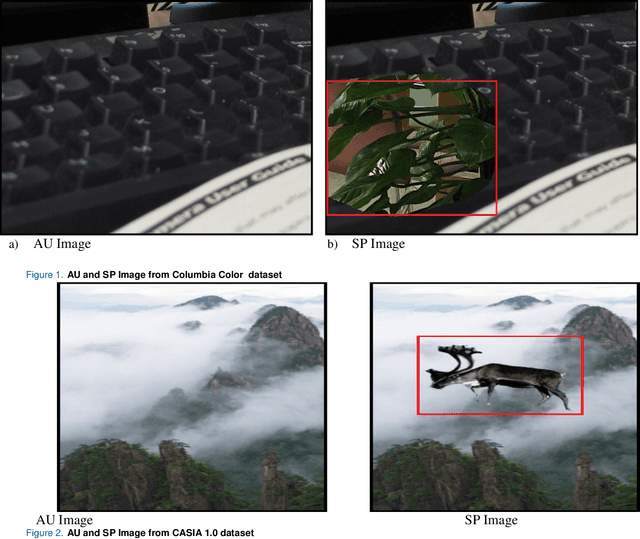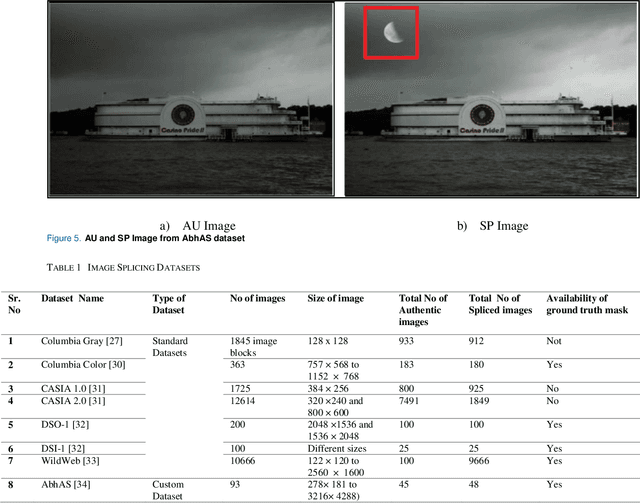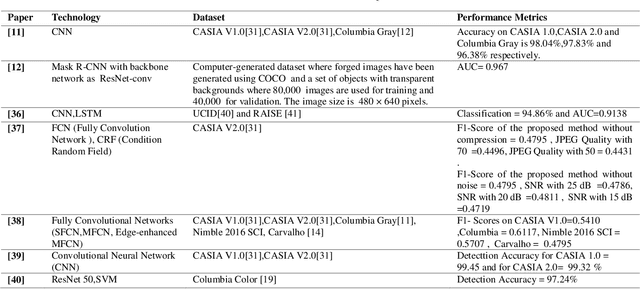Sayan Sahu
Detection and Localization of Multiple Image Splicing Using MobileNet V1
Aug 22, 2021



Abstract:In modern society, digital images have become a prominent source of information and medium of communication. They can, however, be simply altered using freely available image editing software. Two or more images are combined to generate a new image that can transmit information across social media platforms to influence the people in the society. This information may have both positive and negative consequences. Hence there is a need to develop a technique that will detect and locates a multiple image splicing forgery in an image. This research work proposes multiple image splicing forgery detection using Mask R-CNN, with a backbone as a MobileNet V1. It also calculates the percentage score of a forged region of multiple spliced images. The comparative analysis of the proposed work with the variants of ResNet is performed. The proposed model is trained and tested using our MISD (Multiple Image Splicing Dataset), and it is observed that the proposed model outperforms the variants of ResNet models (ResNet 51,101 and 151).
DeepWiTraffic: Low Cost WiFi-Based Traffic Monitoring System Using Deep Learning
Dec 19, 2018



Abstract:A traffic monitoring system (TMS) is an integral part of Intelligent Transportation Systems (ITS) for traffic analysis and planning. This paper addresses the endemic cost issue of deploying a large number of TMSs to cover huge miles of two-lane rural highways (119,247 miles in U.S.). A low-cost and portable TMS called DeepWiTraffic based on COTs WiFi devices and deep learning is proposed. DeepWiTraffic enables accurate vehicle detection and classification by exploiting the unique WiFi Channel State Information (CSI) of passing vehicles. Spatial and temporal correlations of preprocessed CSI amplitude and phase data are identified and analyzed using deep learning to classify vehicles into five different types: motorcycle, passenger vehicle, SUV, pickup truck, and large truck. A large amount of CSI data of passing vehicles and the corresponding ground truth video data are collected for about 120 hours to validate the effectiveness of DeepWiTraffic. The results show that the average detection accuracy of 99.4%, and the average classification accuracy of 91.1% (Motorcycle: 97.2%, Passenger Car: 91.1%, SUV:83.8%, Pickup Truck: 83.3%, and Large Truck: 99.7%) are achieved at a very small cost of about $1,000.
 Add to Chrome
Add to Chrome Add to Firefox
Add to Firefox Add to Edge
Add to Edge